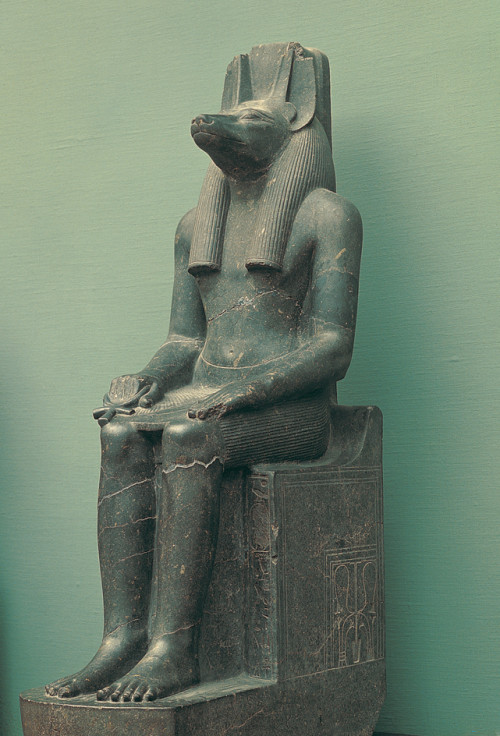This exquisite statue of Anubis, the god of mummification and the afterlife, was found in the tomb of King Tutankhamun. Credit: © Prisma/Alamy Images
This week’s Mythic Monday features Anubis, one of the best-known gods of ancient Egyptian mythology. Famously depicted in ancient Egyptian art as a crouching jackal or dog, or as a man with a jackal’s head, Anubis served as the god of mummification, the ancient Egyptian technique of embalming the dead. His main center of worship was at Kynopolis, which means Dog City in Greek. The culture of ancient Egypt existed for thousands of years. Over time, the role of Anubis changed, but he always held an important place in Egyptian mythology.
Thousands of years ago in ancient Egypt, hungry jackals would dig up bodies buried in shallow desert graves and feed on them. To ancient Egyptians, who thought that a person’s body needed to be preserved in order to enjoy the afterlife, this was a fate worse than death itself. Consequently, people would pray and make offerings to the jackal god to spare the bodies of their loved ones. In this way, the jackal became associated with the dead, and Anubis was worshipped as the god of the underworld.
As burials became more complex, another pest became a threat to the comfortable afterlives of ancient Egyptians: grave robbers. After powerful people died, they would be buried with their favorite possessions and other valuable objects. Ancient Egyptians believed that the deceased could enjoy these objects in the afterlife. But the value of the grave goods would often attract thieves looking to make their present lives more comfortable. To ward off would-be robbers, artisans decorated tombs with sculptures and carvings of Anubis. Priests inscribed curses into the tomb walls, invoking the jackal god and promising punishment in this life and the next to any who desecrated the tombs.

This Anubis statue from the Temple of Luxor dates from around 1400 B.C. Credit: Ny Carlsberg Glyptotek, Copenhagen, Denmark
Later in ancient Egyptian history, the god Osiris rose to prominence and replaced Anubis in myths as ruler of the dead. Anubis retained an important role in the mythology of the dead, however. He was credited with inventing the mummification process, enabling mortals to live on in the afterlife. With the moon god Thoth, Anubis weighed the hearts of the dead on the scales of justice in the underworld, judging the merit of their souls.
Anubis was depicted as a close ally of Osiris, as either his brother or son. In one story, Osiris’s jealous brother Seth murdered the god-pharaoh Osiris and cut the body into pieces, stuffed the pieces into a box, and set the box afloat on the Nile River. With the help of other sympathetic deities, Osiris’s wife Isis found the dismembered remains. She gave them to Anubis, who reassembled the pieces and embalmed the body, enabling Osiris to live on in the afterlife. Thus restored, Osiris descended to the underworld and became the king of the dead.
Untitled Document Can't view the linked articles? Subscribe to World Book Online

World Book Online delivers a progressive sequence of core databases supported by supplemental
tools, such as language translation, graphic organizers, and unique Webquests. Moving from
Early World of Learning to World Book Advanced, World Book Online aligns end-users with their
appropriate learning levels. Each stand-alone site provides additional features to support the
needs of users’ specific capabilities.
The World Book Difference
World Book combines cutting-edge technology with traditional editorial excellence to produce
authoritative, trustworthy, and unbiased content. The digital content is updated in real time and
carefully curated for each learning level. Accessible 24/7, the content is available on a variety of devices.
World Book Online combines 21st-century instructional techniques with timely information.
By breaking down complex topics and using easily understandable text, World Book Online helps to
build fluency and increase comprehension. Featuring single sign-on capability, these sites are paired
with highly visual content to engage even the most reluctant reader. Our collection of resources kindles
a lifelong learning experience for every user. This adherence to clarity, currency, and accuracy makes
World Book’s digital offerings an information hub for the classroom, library, and beyond.